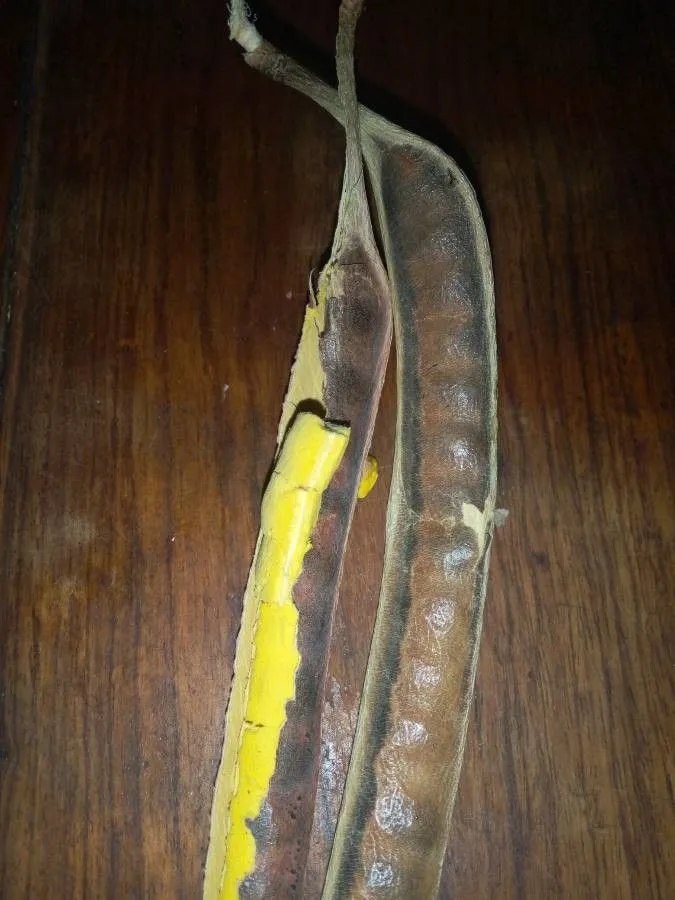
Author: (Jacq.) R.Br. ex G.Don
Bibliography: J.C.Loudon, Hort. Brit.: 277 (1830)
Year: 1830
Status: accepted
Rank: species
Genus: Parkia
Vegetable: Unknown
Observations: W. Trop. Africa to South Sudan
The African locust-bean, scientifically known as Parkia biglobosa, is a notable species indigenous to the western tropical regions of Africa, extending to South Sudan. Its presence is deeply rooted in the cultures and economies of these regions.
Belonging to the Fabaceae family, this deciduous tree can reach impressive heights, often growing between 7 to 20 meters tall. The tree is easily recognizable by its spreading crown and leafy appearance, providing significant shade. Typically flowering during the dry season, the tree produces globular heads of fragrant, bright yellow to reddish flowers. These flowers are not only visually striking but also attract a range of pollinators, including bats and insects, which contribute to the biodiversity of the regions it inhabits.
The African locust-bean tree produces long, cylindrical fruits resembling pods, commonly known as locust beans. These pods host several seeds each surrounded by a yellowish, edible pulp with a sweet flavor, making them a vital food source. The seeds are fermented to produce a traditional condiment, known as ‘dawadawa’ in West Africa, which is rich in protein and adds a distinctive taste to various dishes. This makes the tree a critical component in the local diets and cuisines.
Beyond its culinary uses, the African locust-bean tree has numerous applications. In traditional medicine, different parts of the tree are used to treat a variety of ailments, such as infections and fevers, leveraging its medicinal properties. The bark, leaves, and roots are particularly valued for their antiseptic and anti-inflammatory effects.
Environmentally, Parkia biglobosa plays a crucial role in soil fertility and conservation. Its ability to fix nitrogen enriches the soil, benefiting surrounding plant life and agricultural practices. The tree’s extensive root system also helps in preventing soil erosion, making it an essential species in tropical agroforestry systems.
Documented in J.C. Loudon’s “Hortus Britannicus” in 1830, and attributed to the plant scientists (Jacq.) R.Br. ex G.Don, the African locust-bean’s importance has been acknowledged for nearly two centuries. It stands as a testament to the enduring value of this versatile and beneficial tree within African ecosystems and human societies.
The African locust-bean tree is more than just a plant; it is a symbol of sustainability, nourishment, and traditional knowledge that continues to support and enrich the communities of West Africa and beyond.
Eng: african locust-bean, clapperton’s parkia, west african locust-bean
Fra: arbre à farine, mimosa pourpre, néré
Por: farroba
En: African locust-bean, Clapperton’s parkia, West African locust-bean, African Locust Bean Tree, Néré
Fr: Arbre à farine, Mimosa pourpre, Néré
Pt: Farroba
Taken Nov 25, 2021 by E Schmidt (cc-by-sa)
Taken Jul 24, 2022 by anca isabela (cc-by-sa)
Taken Jan 13, 2020 by Aelle J (cc-by-sa)
Taken Mar 22, 2017 by Youkpo Barthélemy Oréga (cc-by-sa)
Taken Jun 1, 2021 by fall ndeye (cc-by-sa)
Taken Nov 26, 2021 by E Schmidt (cc-by-sa)
Taken Jan 13, 2020 by Aelle J (cc-by-sa)
Taken Jan 13, 2020 by Aelle J (cc-by-sa)
Taken Jan 13, 2020 by Aelle J (cc-by-sa)
© copyright of the Board of Trustees of the Royal Botanic Gardens, Kew.
© copyright of the Board of Trustees of the Royal Botanic Gardens, Kew.
© copyright of the Board of Trustees of the Royal Botanic Gardens, Kew.
Family: Myrtaceae Author: (F.Muell.) K.D.Hill & L.A.S.Johnson Bibliography: Telopea 6: 402 (1995) Year: 1995 Status:…
Family: Rubiaceae Author: Pierre ex A.Froehner Bibliography: Notizbl. Bot. Gart. Berlin-Dahlem 1: 237 (1897) Year:…
Family: Sapindaceae Author: Koidz. Bibliography: J. Coll. Sci. Imp. Univ. Tokyo 32(1): 38 (1911) Year:…
Family: Asteraceae Author: A.Gray Bibliography: Pacif. Railr. Rep.: 107 (1857) Year: 1857 Status: accepted Rank:…
Family: Fabaceae Author: Medik. Bibliography: Vorles. Churpfälz. Phys.-Ökon. Ges. 2: 398 (1787) Year: 1787 Status:…
Family: Aspleniaceae Author: (Cav.) Alston Bibliography: Bull. Misc. Inform. Kew 1932: 309 (1932) Year: 1932…